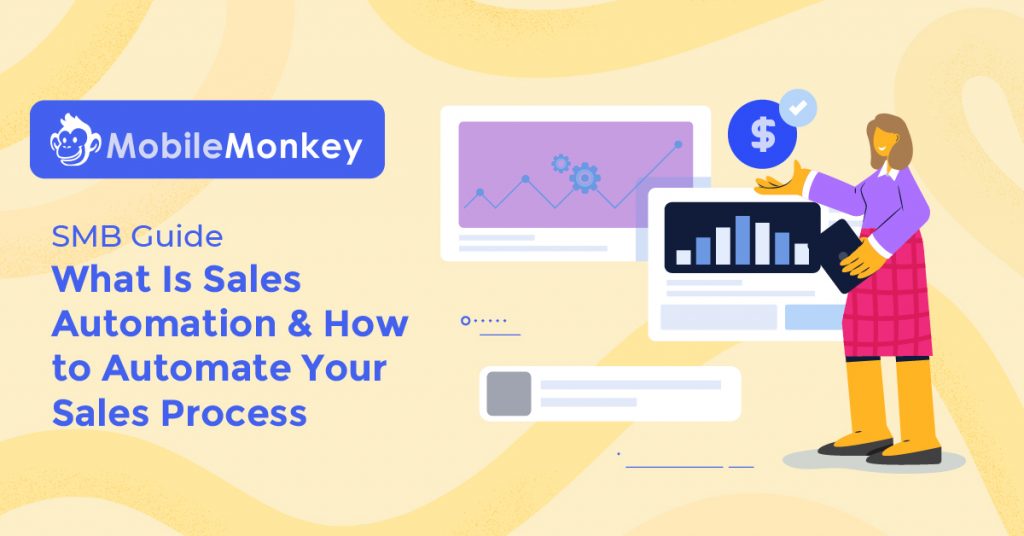Today I’m going to show you how to automate your sales process so you can find qualified prospects, fill your sales pipeline, and generate revenue using your company’s web and social media channels, email and SMS.
If you haven’t integrated sales automation in your marketing funnel and sales pipeline yet, your team is probably in a common donkey situation: handling the entire sales process manually.
When your sales team personally manages prospecting, nurturing, and everything in between, you tend to waste a ton of time and resources. You’re also likely to risk compromising the most important part of the process: securing sales.
When you implement sales automation, you can transform an inefficient process into a unicorn system. Sales automation tools like Customers.ai can manage administrative tasks like lead generation and lead scoring, allowing you to focus on critical tasks like closing deals.
Curious how Customers.ai can automate your sales process? Experience the sales automation here starting on Instagram and then follow the tutorial below to recreate it.
Here’s your map to Unicorn Land, where you can automate time-consuming sales tasks, improve your sales funnel, and generate more revenue:
- What is sales automation?
- What is a sales automation tool?
- How to automate your sales process (complete 5-step tutorial)
What is sales automation?
Sales automation is the process of systematizing sales tasks using a combination of digital applications and artificial intelligence. Sales automation software manages sales outreach, SMS and email campaigns, and data entry—essentially your sales reps’ most time-intensive tasks.
When you automate your company’s sales process, your team can increase efficiency and improve productivity. With the right sales and marketing automation tools, you can also amplify your revenue and other key performance indicators (KPIs).
Can automation really affect your bottom line? Nearly 80% of marketers report an increase in leads and conversions due to automation—and the right tools can improve productivity by an average of 20%.
What is a sales automation tool?
A sales automation tool is designed to manage the manual tasks that sales reps typically handle, making it an integral part of the broader digital transformation strategy. Some tools can systematize the entire sales process, while others have more specific functions.
Most integrate with other platforms to build a seamless system. Here are some of the key tasks automation tools can oversee:
- Lead generation, or using lead magnets to turn casual prospects into potential leads
- Lead scoring, or determining how likely prospects are to buy from your business
- Appointment setting, or scheduling sales calls with qualified prospects
- Lead nurturing, or guiding prospects through the customer journey efficiently
- Team notifications, or alerting sales reps to qualified leads who are ready to buy
Customers.ai can tackle all of these tasks, using social media, automated text messages, and web chat for outreach. Since Customers.ai integrates with Zapier, it offers a powerful option for automating your sales process.
How to Automate Your Sales Process
Let’s set up a simple sales automation process using Customers.ai. In this example we’ll use Instagram as the channel to find and capture prospects—but a sales automation may start in any channel where your business markets its solutions, including Facebook Messenger, its website, and other digital channels.
Here’s how to set up sales automation that automates your sales process in 5 steps using Customers.ai:
- Design a lead magnet
- Create the lead collection funnel
- Promote the lead magnet
- Set up follow-up sales outreach automation
- Notify your sales team about qualified leads
Jump to each step of the sales automation tutorial with the links above or read on!
Demo the exact sales automation we create together here by commenting “AUTOMATE” on this post from your Instagram mobile app.
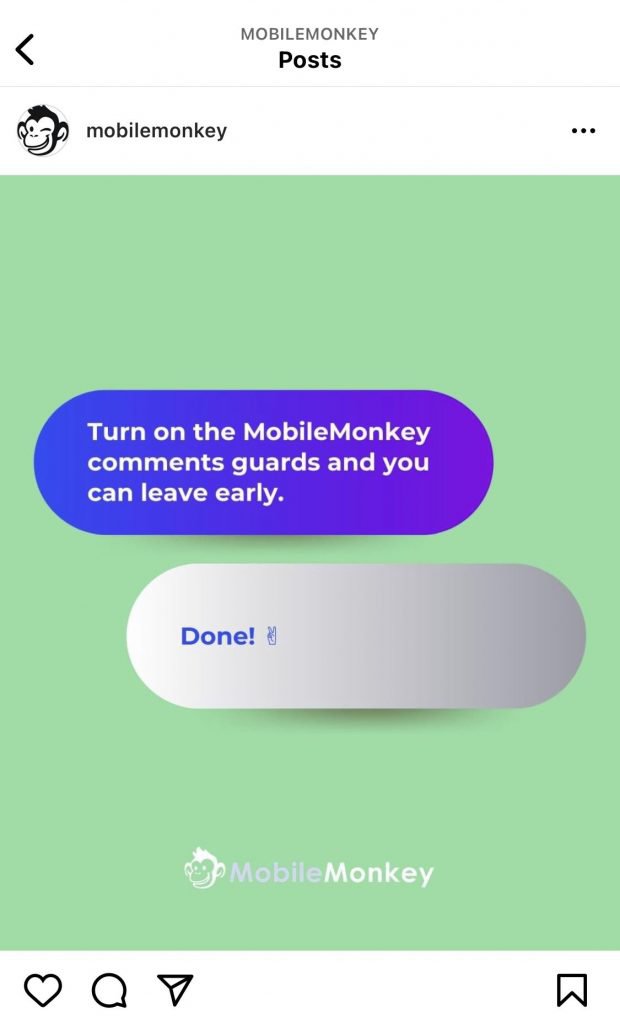
How to Automate Your Sales Process Step #1: Design a lead magnet
In some cases, you might already have a steady stream of prospects entering your sales funnel. In other cases, getting prospects into your sales pipeline may be a constant challenge.
Either way, a lead magnet can help you find the right prospects for your business.
After all, lead magnets are tailored to your ideal customer. That means they’re designed to attract the right buyer—a person or organization with a problem your business can solve.
Lead magnets also offer unique value to your target customer. They might give prospects a roadmap for making a major decision or provide exclusive insight into an industry trend.
In exchange, lead magnets let you guide prospects through your sales funnel and identify qualified leads. They also allow you to collect prospects’ contact details so you can follow up and guide them toward a sale.
So how can you design the ideal lead magnet for your target customer? Think about:
- How you can create a genuinely valuable resource that answers customers’ questions
- How you can build credibility and encourage prospects to trust your business
- What types of resources prospects need when they’re ready to buy—which can help you identify qualified leads
For example, Customers.ai offers free access to Instagram and Facebook growth tools as a lead magnet. By promoting InstaChamp, we can give access to a useful tool while attracting prospects who want to automate lead growth from marketing channels including a website.
For this sales automation demo we’ll use a free edition of InstaChamp for our lead magnet.
How to Automate Your Sales Process Step #2: Create the lead collection funnel
Once you’ve created a lead magnet, set up the automated system to interact with people, score leads and collect lead information.
Open Customers.ai, navigate to Automations, and select a sales outreach template that matches your needs to get started. We’ll use the Free E-book/Whitepaper Download Offer.
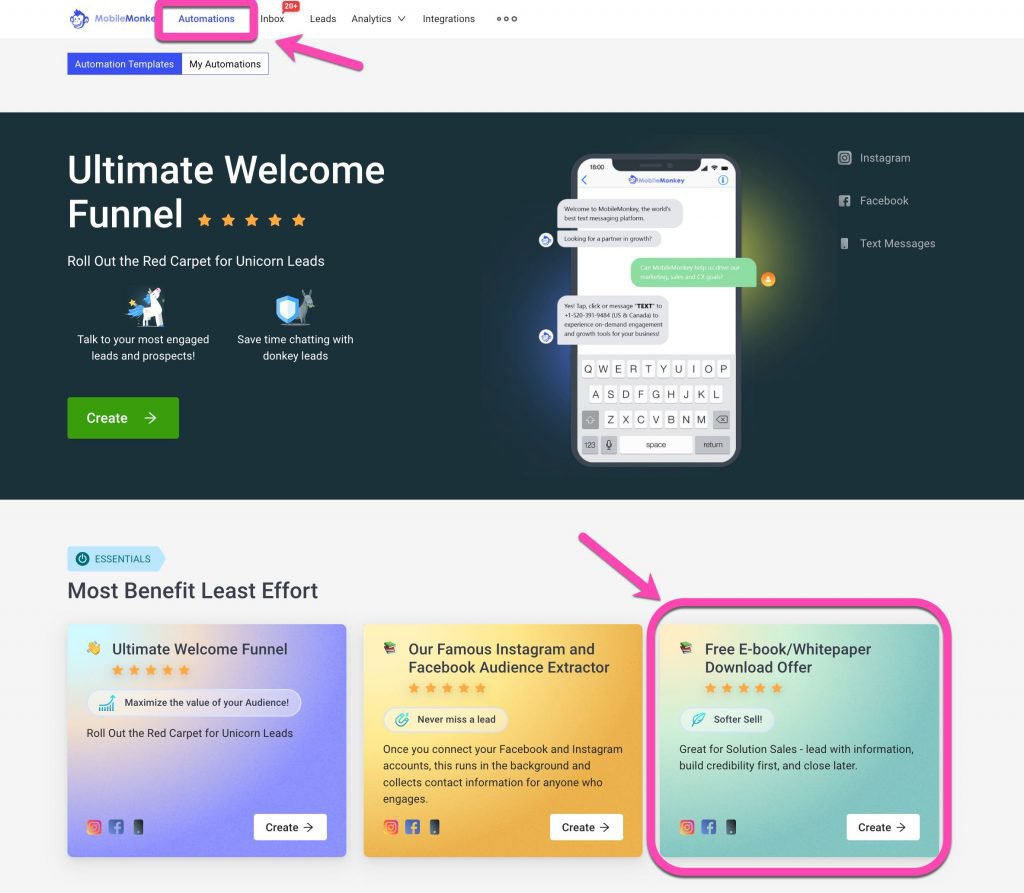
You’ll then select the starting connection for where leads will first enter this funnel. For this demo we’ll choose Instagram so that you can experience the sales automation yourself. (Don’t worry — you can always change or add more connection points for entering this funnel later.)

Next, create the basic framework for the automation, which is 3 parts:

- Trigger type
- Lead information the automation will collect to follow-up and score the lead
- Follow-up sequence (emails and text messages)
Now, when you see the pre-built automation, it’s time to customize a few things. Click on the Trigger and it’ll pop open a tool to pick the funnel entry point, in this case, an Instagram comment autoresponder.
Note: You can add more Input Triggers at any time, including X-Ray, which automatically scans your website traffic and collects email addresses of anonymous website visitors so you can follow-up with leads who have visited your site while looking for your products and services.
Comment autoresponders automatically respond to specific comments on Instagram posts with Instagram Direct messages (DMs). They’re great for moving public conversations to DMs, where you can share resources and collect contact details.
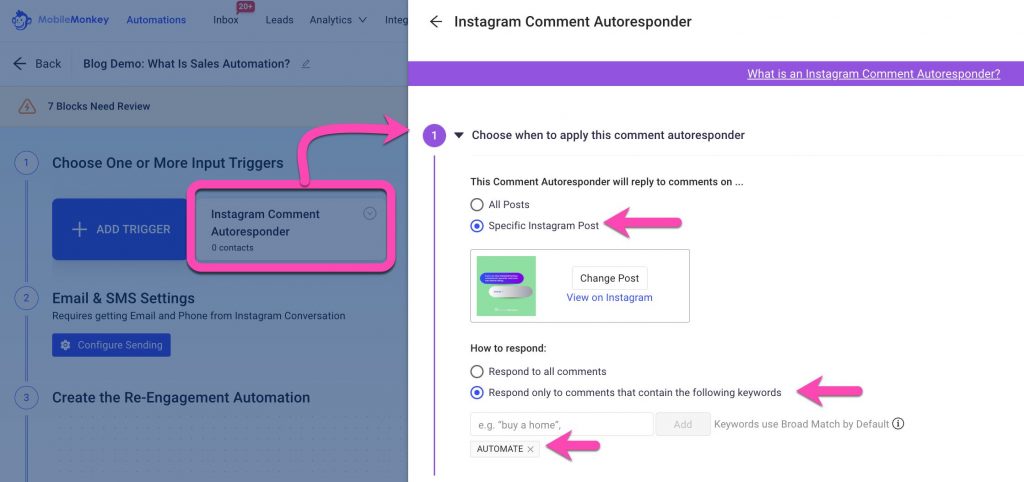
Comment autoresponders can trigger on all your Instagram posts or a specific piece of Instagram content. Autoresponders can trigger for all comments, or for comments that use a specific keyword.
Make a note of the keyword you choose. It’s recommended that if you’re connecting your sales automation funnel to social media, include a call to action in the caption of your social post, prompting them to start the automation.
Next, set up the conversational sequence to greet commenters and confirm that they’d like to receive your lead magnet. Click “Add widget” under step 2 of the Instagram autoresponder automation, and choose “Options” for the type of widget you’re adding:
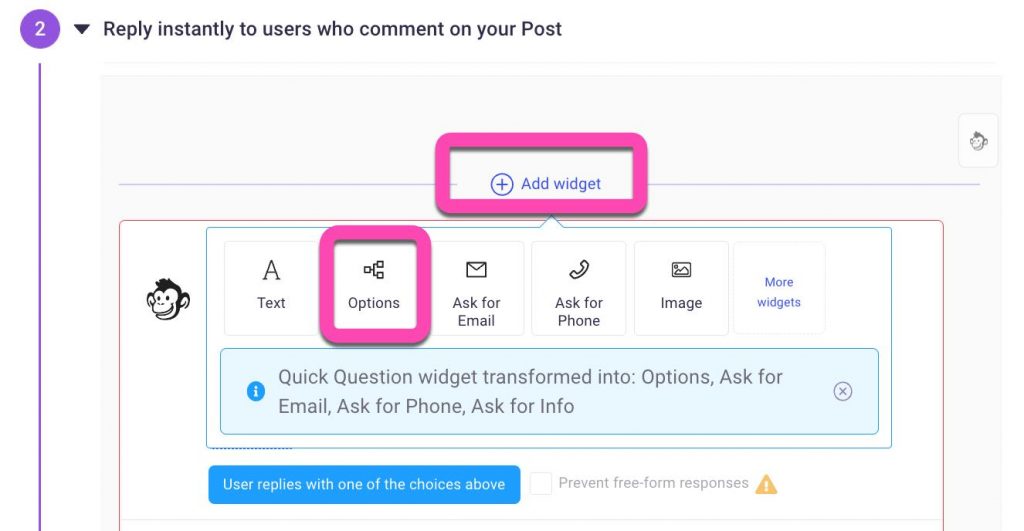
Pop some text as the greeting, and customize the button that the user can choose to a confirmation word, like “Absolutely”:

Then collect contact information from leads. Ask for their email address, mobile number, or both so you can send your lead magnet and follow up later.
To collect contact details efficiently, use an Ask for Email or Ask for Phone widget. That way Customers.ai can easily process the responses and save them to your customer relationship management (CRM) tool.
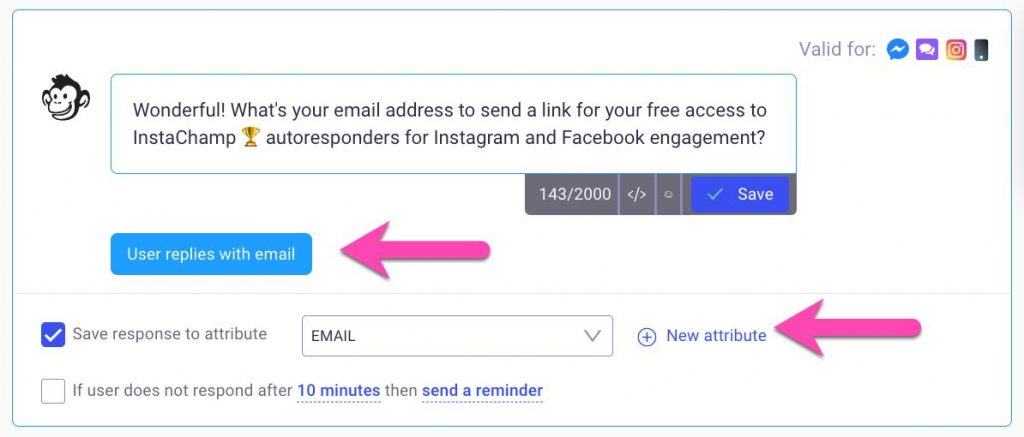
Check the Save response to attribute box to ensure the data automatically goes to the right spot in each customer record. Then confirm that you’ve selected the right attribute.
Key to the sales automation process is scoring leads as qualified or unqualified, high-intent, and other qualities that signals a high-quality lead for the sales organization.
Remember how we set up the automation template to ask 2 qualifying questions? Go ahead and customize them with the questions that will score your lead as qualified for sales follow-up.
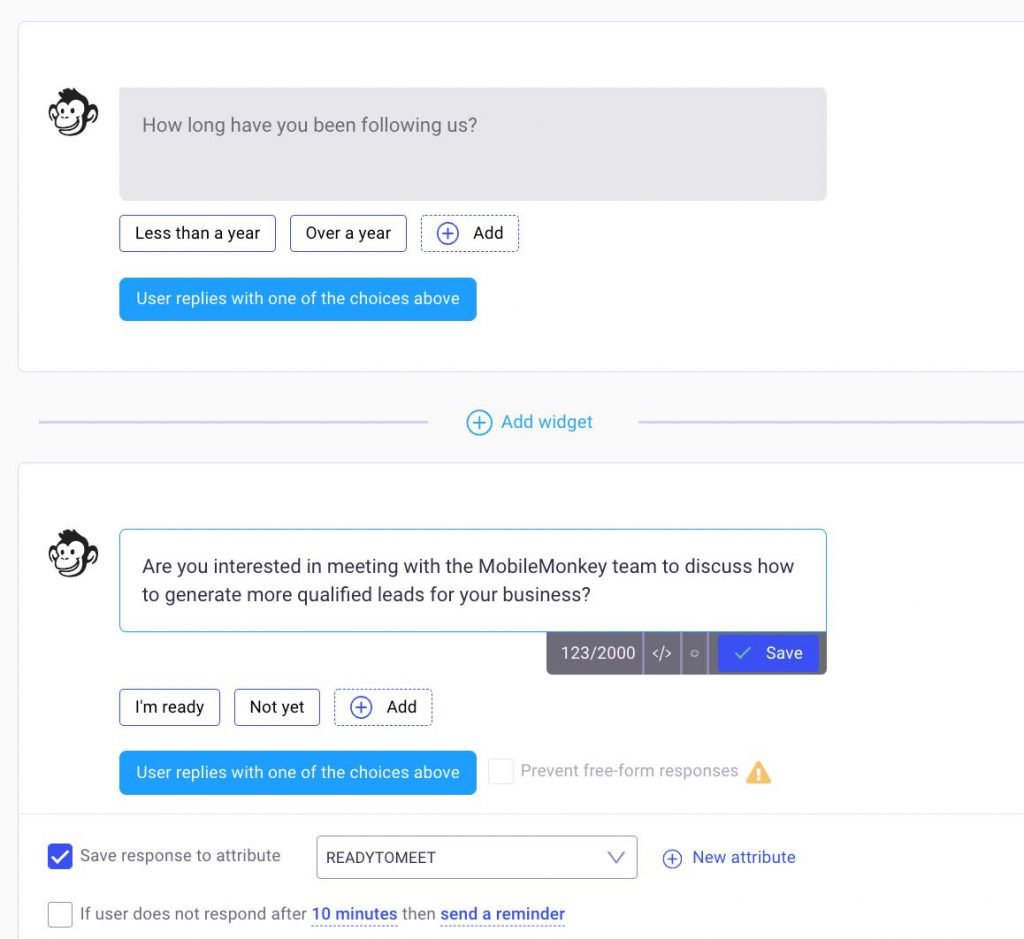
If you’d like, you can send a link directly to the lead magnet from here. For this example, we added an extra prompt to get prospects to launch their InstasChamp account asap.
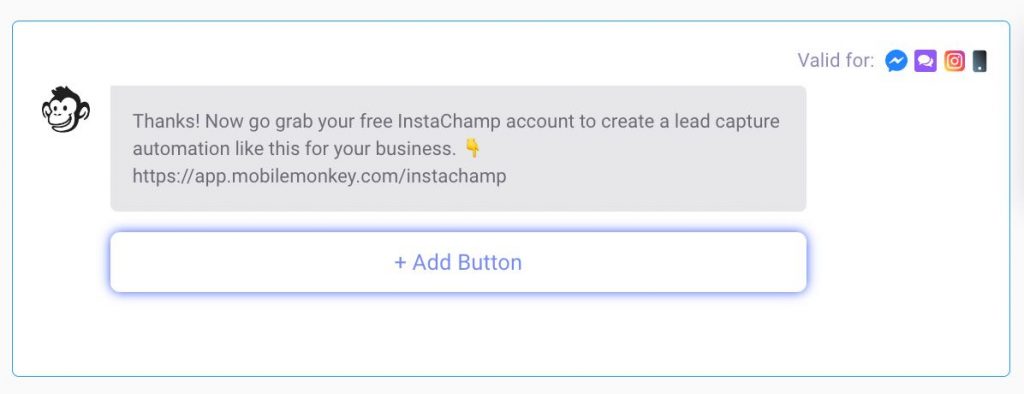
We’ll also be syncing the email addresses collected in this step to your email service or email follow-ups in step 4.
How to Automate Your Sales Process Step #3: Promote the lead magnet
Now you’ve got your lead collection automation in place. Toggle your Instagram comment guard on in Customers.ai and head over to your Instagram app.
Create an Instagram post that appeals to your target audience and highlights your lead magnet. In the caption, add a call-to-action (CTA) that prompts people to leave a comment with your keyword.
Check out the Customers.ai Instagram post above. In the caption, we encouraged people to comment with a specific keyword.
Once you publish the Instagram post related to your comment guard, go back into the Trigger step and set the comment autoresponder to work with a Specific Instagram Post. Then click the Choose Post button and link the post as well as make sure your keyword responder is included.
How to Automate Your Sales Process Step #4: Set up follow-up sales outreach automation
Next, automate your lead tracking and nurturing process.
First, set up automated emails to follow up with prospects and guide them further along in your sales funnel.
In the sales automation builder, configure your email sender(s) via Google email account authorization:

Or, configure email to send through your SMTP server via “Connect Manually” under the Integrations navigation:
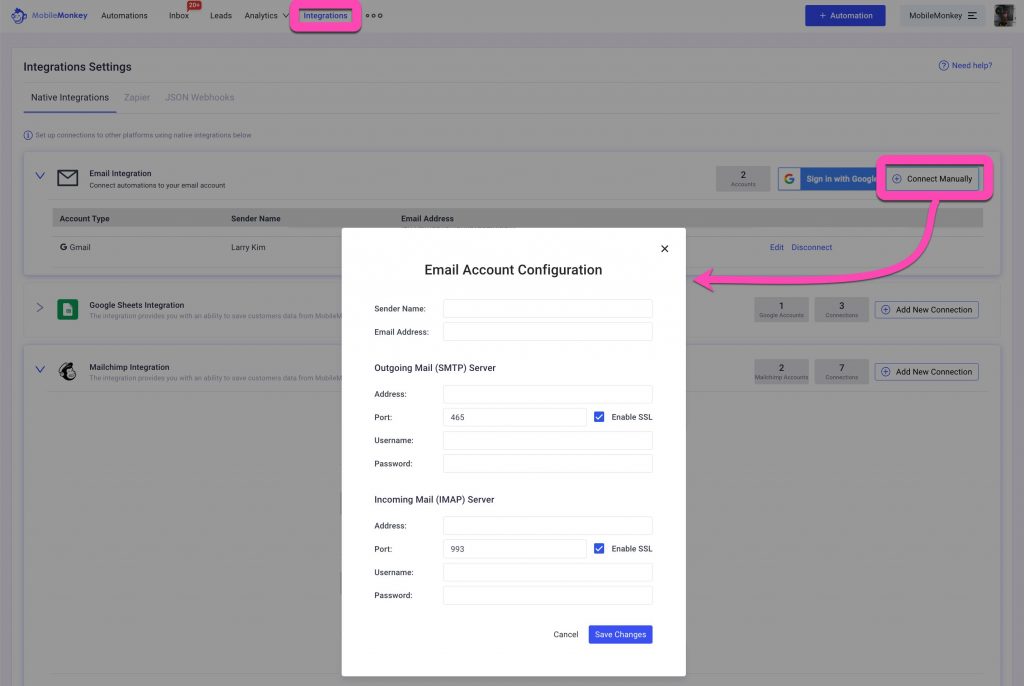
Finally, it’s time to configure the sales outreach automated follow-up.
Go to “Create the Re-Engagement Automation” in the automation to set up your sales outreach cadence:
- Start by setting the delay period, a minimum of 1 minute, a default of 15 minutes.
- Then configure the characteristics of your “Unicorn” or qualified leads in the Unicorn Detector.
- Then customize the email and text message outreach.
Here’s where each of the above steps are customized:

Let’s take a closer look at how to identify your unicorns. In the Unicorn Detector widget, click the blue text that says “Tags: include sentfile” in the screenshot above. That will take you to a screen that allows YOU to define what a sales qualified “Unicorn” lead is.
In this demo we asked 2 qualifying questions: “How long have you been following us?” and “Are you interested in meeting with us?” And we saved the responses to these 2 questions as contact attributes. We’ll call on those attributes now:

Save and voila! You’re Unicorn Detector will count and segment these sales qualified leads:
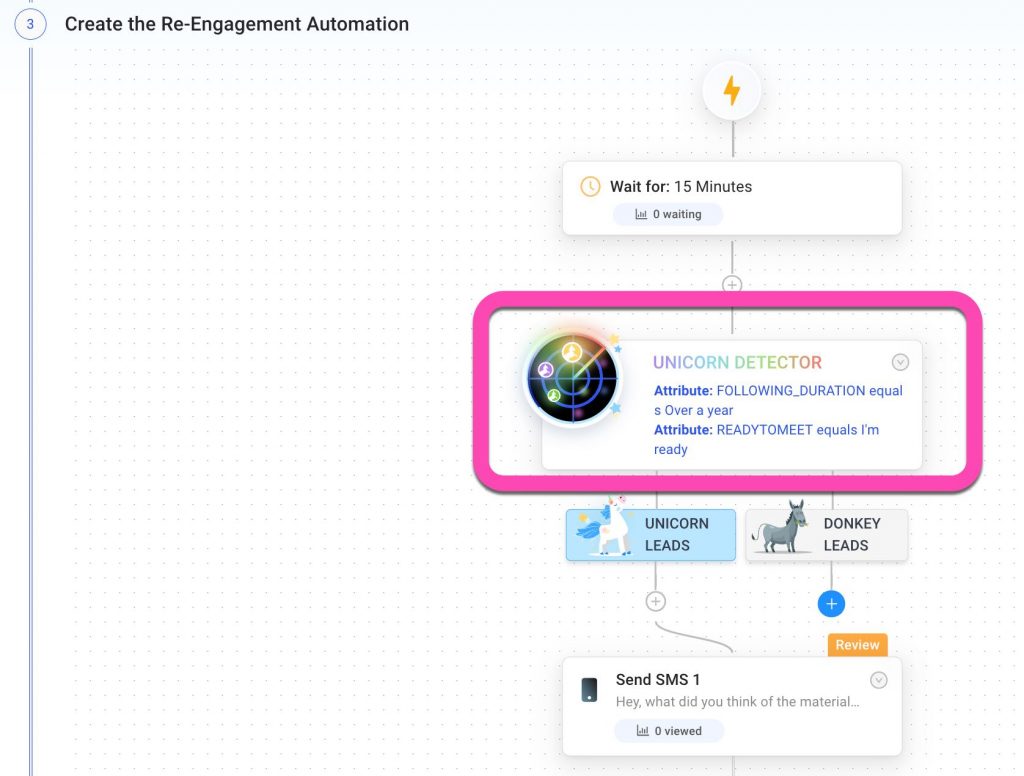
Now it’s time to write the outreach sequence with the pre-populated SMS and email widgets. Click “Send SMS 1” as well as the time delay widgets to update them.
Here’s our first SMS outreach:
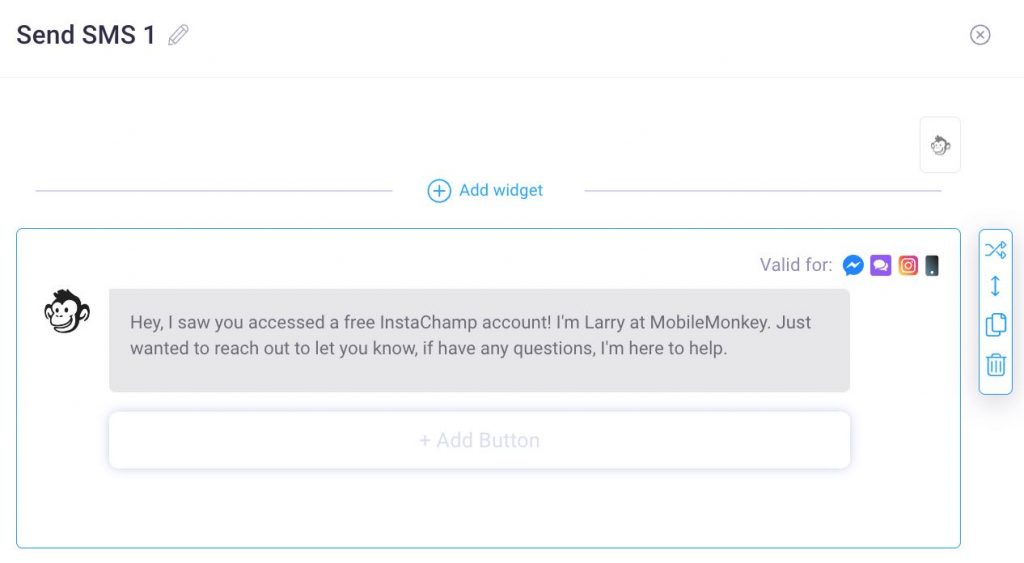
An hour later, this email will be sent as follow-up:
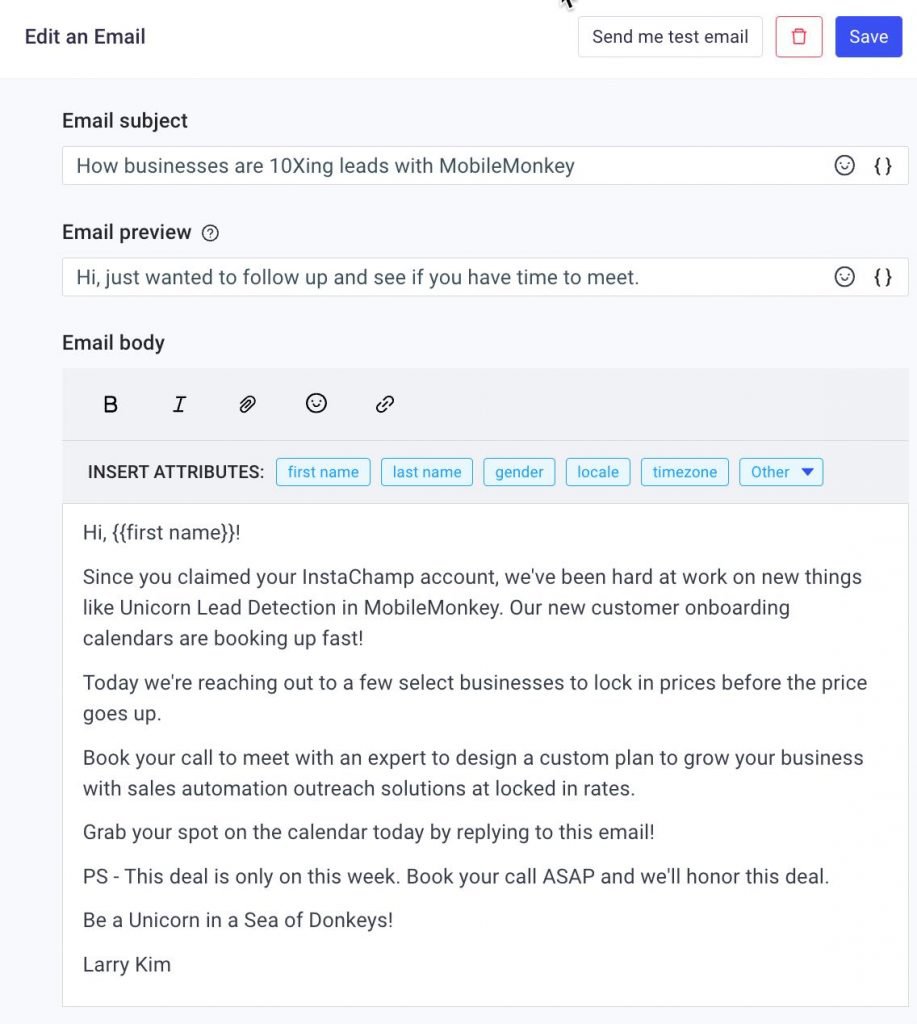
Hot tip: You might also want to sync your leads from this sales automation to a CRM or email platform. You can connect the leads from this automation to any email service or CRM using Zapier.
Learn more about setting up a zap connecting Customers.ai and your other business apps using Zapier here.
How to Automate Your Sales Process Step #5: Notify your sales team about qualified leads
It’s also a good idea to notify your sales team about leads who may be ready to take the next step. Add a Notification widget to the first outgoing message after the Unicorn Detector identifies a sales qualified lead:

You have alert types to choose from:
- Push notification: This will send a push notification according to the Push Notifications settings you have configured. (Learn more.)
- Email: Use this to email a sales person or group email account of a Unicorn lead requiring follow-up.
- Mark as follow up: This will mark the conversation as requiring follow-up in the Customers.ai inbox.
If you choose Email as the method, set up the notification message that will be contained in the email alert.
You can automatically insert the customer’s name and a link to the conversation in the notification email, as well as other information collected in the automation by typing double brackets (“{{“} to access a list of attributes.
Now you can get leads into your sales pipeline automatically, with limited ongoing management for prospecting. And by connecting your CRM and notifying your sales team, you can keep sales reps in the loop.
Take the Fast Track to Unicorn Land With Sales Automation
With a sales automation tool like Customers.ai, you can turn prospects into customers without wasting your sales team’s time or resources. That means you can transport your sales reps to Unicorn Land—where all the prospects they interact with are unicorn leads.
Want to start generating unicorn leads for your sales team? Grab your free Customers.ai trial and get started today.
Important Next Steps
- See what targeted outbound marketing is all about. Capture and engage your first 500 website visitor leads with Customers.ai X-Ray website visitor identification for free.
- Talk and learn about sales outreach automation with other growth enthusiasts. Join Customers.ai Island, our Facebook group of 40K marketers and entrepreneurs who are ready to support you.
- Advance your marketing performance with Sales Outreach School, a free tutorial and training area for sales pros and marketers.
